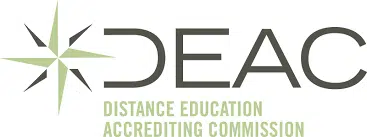How To Communicate Abroad Without Speaking The Language : Travel Tips For Beating The Language Barrier
Join a global community of over 200,000 TEFL teachers working throughout the world! Enrol me!
One of the biggest worries future TEFL teachers have when moving abroad? The language barrier.
Imagine stepping off the plane in Seoul or Santiago or Stockholm, jet-lagged and lost, with no idea how to find your way out of the airport. You can’t ask for help. You can’t understand the airport announcements. You can’t read the airport signs.
Psst! We’ve all been there and done that. Don’t let it stress you out – you make a plan, Stan!
Learning the local language is the obvious answer to how to manage in a foreign country without the language, but realistically, it takes time. In the meantime, you still need to figure out your way around your new home!
Read more: How To Learn The Local Language
As a TEFL teacher, that’s not all you’ve got on your plate: you’re starting a new job, finding your way around town, making new friends, and even sorting out essentials like internet and a phone.
Overcoming a language barrier doesn’t have to be stressful, so take the pressure off and follow these handy tips to get by.

How to get around in a foreign country without speaking the language
Learn a few basics.
With all the language learning apps available, there’s no excuse not to learn some basic vocabulary and useful phrases before you jet off to your new teaching job.
Focus on greetings, numbers, directions, and common classroom instructions. Knowing a few essentials will make your experience a lot smoother.
But don’t forget to check whether it’s okay to use the local language with your students. In immersion classrooms, teachers are usually preferred to speak only English, even when giving instructions.
“My first culture shock! The language barrier was real; my attempts at speaking a few words of Bahasa often left people giggling or confused. At first, I felt like a fish out of water. But slowly, things started to click.” – Ivan Io Conte in Jakarta, Indonesia
Read more: Navigating Culture Shock: My Real Experience Teaching English In Vietnam
Have a translation app handy for quick fixes.
Apps like Google Translate can be a lifesaver. Make sure to download the best translation apps for travellers, so you can access them without an internet connection. Just remember to keep your phone charged!
Carry a pocket-sized phrasebook.
Phrasebooks might feel old-skool in the age of translation apps like Google Translate, but they’re still useful when your phone dies!
Buy a small phrasebook containing key phrases, and don’t be scared to whip it out when needed. Sometimes pronunciation gets in the way of understanding, leaving people confused as to what you’re trying to say. Being able to point to what you’re saying saves a lot of hassle and frustration.
Save a local friend on speed dial.
There will be times when a taxi driver just doesn’t understand you. A quick call to your friend to explain can save a lot of stress and get you where you need to go.
“Everyone I’ve met so far has been super friendly despite the language barrier.” – Mark Hampton in Łódź, Poland
Use nonverbal communication.
When words fail you, your body, face, and hands can do the talking! We’re talking about body language.
Keep in mind that body language differs all over the world. What might seem innocent to you can be offensive elsewhere. For example, pointing using your index finger is very rude in many East Asian cultures. A little research beforehand can save you from embarrassment or tricky situations.
“It was quite difficult to teach such young students because of the language barrier, but I learnt to use my hands and pictures to explain things. Thanks to my TEFL course, I knew how to deal with the situation and engage the students.” – Sophie Huggon in Kathmandu, Nepal
Speak slowly.
Some locals may know some English, especially in countries where English is a second language, so you might be able to get away with a bit of English but you’ll need to slow your pace to make it easier for them to understand. Use simple words, clear pronunciation, and gestures to help get your message across.
The opposite is also true. It’s a good idea to learn the local phrase for “Please speak more slowly” for when you’re trying to understand someone speak the local language!
Write down important addresses.
One of the first things you need to do is write down your school address and new home address. You can ask your co-teacher or a friendly local to do this for you. This is useful for showing taxi drivers, and when you’re too tired to try to explain where you live!
Practise saying your address. It helps to write it in phonetics so you don’t forget the pronunciation.
Memorise a few popular local landmarks to help with directions. For example, if your apartment is opposite a local supermarket, near a restaurant or next to a market.

How to overcome language barriers in the classroom
While nonverbal communication gestures can get you part of the way, in the classroom, you’ll need to simplify and adapt your lesson plans (and materials) to support understanding even more.
Read more: How Can I Teach English Abroad Without Speaking The Local Language?
Keep lessons simple and level-appropriate
- Keep your students’ level of English in mind when designing lessons.
- Give instructions in short, easy-to-follow steps.
- Adapt existing lessons and materials to help your students build confidence and stay motivated throughout the lesson.
“I learn from them every day [my students]. I see that language is not a barrier when it comes to teaching. Just do it with love and passion.” – Maria Florencia Ruiz in Trat, Thailand
Make lessons engaging
- Use visuals, realia, multimedia, and hands-on activities that bring your lessons to life.
- Use interactive elements to keep students actively involved in your lessons.
“Most of my students either speak Chinese or Polish. Therefore, I had to introduce sign language, role play and drawing to explain things they don’t understand in words.” – Olanrewaju Oluropo Akinsehinwain in Warsaw, Poland
Read more: 5 Ways To Keep Your Classroom Interesting And Engaging
Use technology and online resources
- Use apps, websites, and online tools to provide extra practice and real-world language exposure. For example, use Duolingo for vocabulary drills or video calls to connect your students with native speakers.
- Gamify learning. Platforms like Kahoot! or Quizlet make learning fun while supporting vocabulary, grammar, and comprehension skills.
Read more: 7 Amazing (Free!) Apps For TEFL Teachers
Overcoming a language barrier abroad is doable.
With a few basics under your belt, plus the right tools, you can overcome almost any challenge in your daily life and in the classroom. Remember to speak clearly, use your body language, lean into technology and ask for help when you need it. And most importantly? Be patient.
And if you think we don’t know what we’re talking about, check out The TEFL Academy Content Writer Lauren’s experience living in South Korea without speaking Korean! Wild!
Accreditation & Quality Assurance
The TEFL Academy was the world’s first TEFL course provider to receive official recognition from government regulated awarding bodies in both the USA and UK. This means when you graduate you’ll hold a globally recognised Level 3 (120hr) Certificate or Level 5 (168hr) Diploma, meaning you can find work anywhere and apply for jobs immediately.
 United States
US
United States
US












